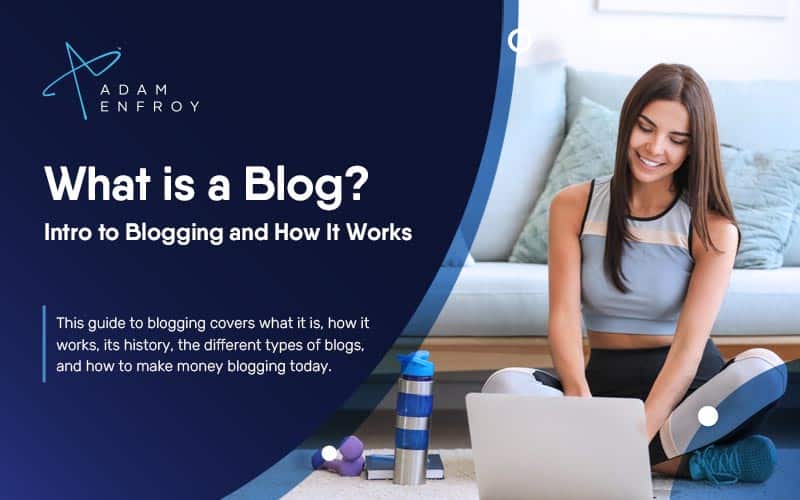The Ultimate List of Webinar Statistics for 2024
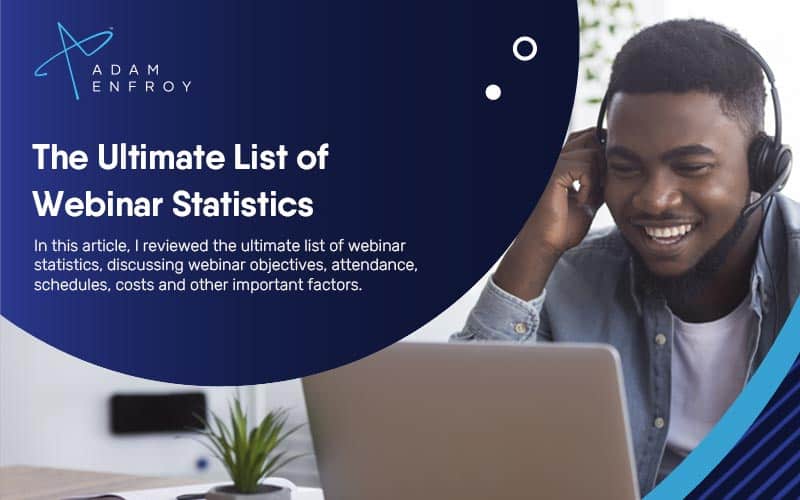
Understanding what a webinar is and the various benefits it can bring to your business is a must in this day and age.
With various webinar software, being able to host and record webinars for your online viewership has never been easier.
This article will provide the ultimate list of webinar statistics to understand better how webinars work and why they are so popular.
If you have ever wanted to use webinars in your business, this article is for you. Let’s get right into it.
What Are The Latest Webinar Statistics?
Here are the latest statistics to consider.
The importance of webinars
1. As much as 95% of companies believe webinars can help their business achieve its goals.
(On24)
Almost all businesses and entrepreneurs surveyed understand that webinars can move them in the right direction to achieve their goals.
This makes sense as hosting a virtual event on any topic helps portray you as the expert while allowing you to educate people looking for information about your product or service.
It also helps to create a community and build an online presence.
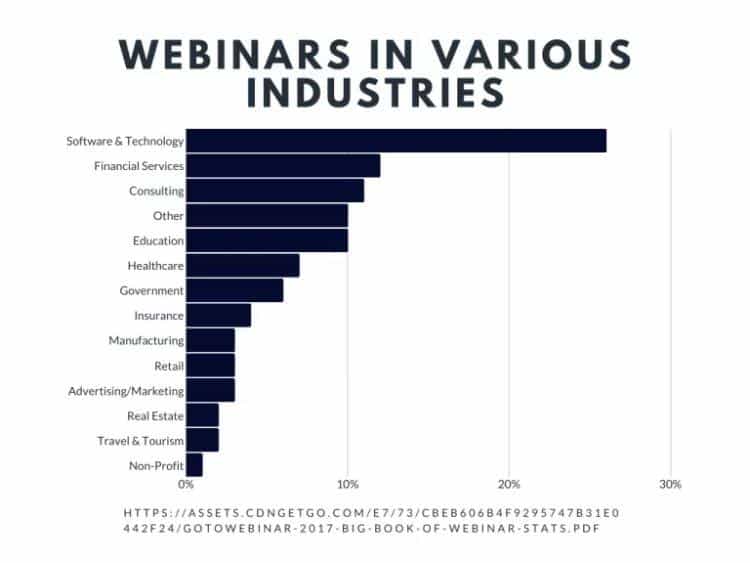
Image Credit: Confertel.net
2. Business-to-business and SaaS companies believe webinars help them develop high-quality leads for their business.
(GoTo)
The importance of having high-quality leads in a B2B company is essential to the company’s success.
Selling various products and services to other businesses is a challenge.
Having high-quality leads can help you grow your clientele in your industry.
3. Zoom searches doubled over two years between 2019 and 2021.
(Google Trends)
With so many webinar hosts using Zoom, it is no wonder why Google searches for Zoom have increased over the past two years.
With a 317 percent increase in Zoom’s revenue from 2019 to 2020, it’s easy to see how the pandemic affected the company positively.
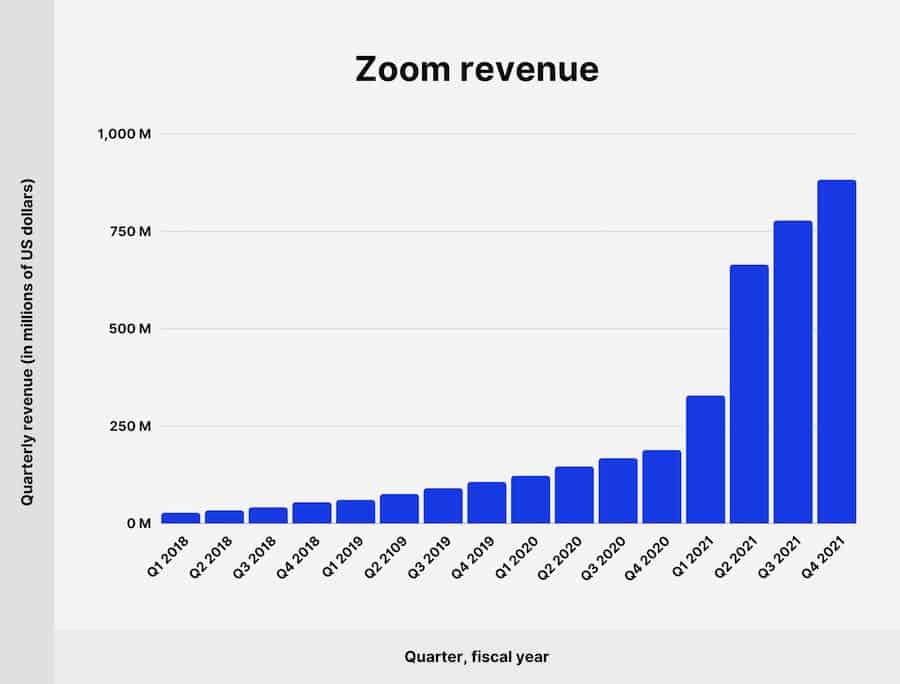
Image Credit: backlinko.com
4. Company’s internal training is increasingly being given through webinars.
(Visionogy)
Companies not only see the benefits of providing their customers with webinars, but they are also providing webinars for their employees.
Allowing companies to educate their customers and internal teams allows for business growth, better customer relationships, higher employee satisfaction, and company knowledge.
These are all reasons why companies now use webinars for training purposes.
Webinars for business objectives
5. Generating leads and sales is something that 76% of webinars aim to do.
(On24)
Leads and sales are the lifeblood of any business.
Having a way to generate leads and sales with a webinar is an excellent way for businesses to use an online event for marketing and education.
With this in mind, 76% of webinars focus on generating leads and sales while providing value to the target audience.
6. Nurturing relationships with loyal customers is the focus of 60% of webinars.
(On24)
Building relationships is vital to the success of any business.
Having the chance to interact with loyal customers and potential ones allows for growth in your company’s community and online presence.
As many as 60% of webinars list nurturing relationships as their primary goal when hosting such events.
7. As many as 61% of companies use webinars for marketing their products and services through content marketing.
(Content Marketing Institute)
Content marketing is as popular as ever.
Using online events to drive your company’s content marketing strategy can be an excellent way for businesses to share their knowledge and expertise with an audience.
As many as 61% of companies use webinars and other forms of content marketing for their business, allowing them to reach their business objectives.
8. Eight out of 10 marketing websites drive webinar registrations through their site.
(Statista)
Getting people to register for a webinar isn’t as easy as it used to be.
You can’t just paste a link anywhere and expect people to register for an online event.
Having marketing websites drive registrants to an event can be a positive aspect for those hosting events as it gives their potential clients more exposure to what they do and increases the number of people who sign up.
Webinar attendance
9. Almost three out of 10 people attend webinars they register for on the same day of the event.
(WebinarCare)
There’s something powerful in offering someone the chance to attend an event on the same day they register.
With people’s need for instant gratification, some expect an event to be ready and available when they’re ready to attend.
Having the chance to offer a webinar quickly gives businesses a way of providing events in a time-sensitive manner that engages their audience.
With almost 30% of people attending webinars they registered for on the same day, businesses need to have a webinar available when people register and are ready to go.
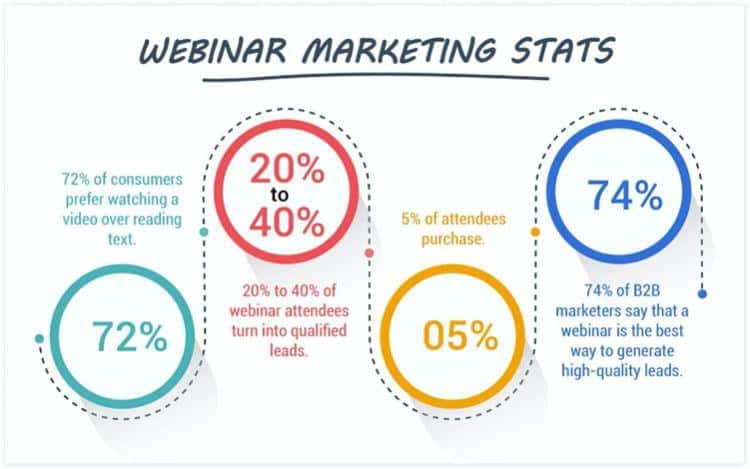
Image Credit: Lifesize.com
10. The webinar attendee conversion rate for business-to-consumer presentations is around 20 to 40%.
(WebinarCare)
A webinar’s successful attendee conversion rate is vital for any business.
The higher the rate, the more people will attend your event.
This means there will be more people that ultimately take action on your message.
On the flip side, having a low percentage turn-up for the event means that there are areas where your webinar marketing can be improved.
Of course, having professional digital marketing strategies in place when hosting a business-to-consumer webinar is a must to have a successful webinar conversion rate.
With an average of 20% to 40% conversion rate, businesses must consider their marketing strategies when hosting online events.
11. Around 44% of those that register for a webinar attend.
(BigMarker)
This stat from BigMarket suggests that less than half of the people who register for an event attend when it takes place.
This significant difference between the number of people who register and show up means that following up after an event – with both those that attended and those that didn’t – is as important as ever.
12. Webinars that educate and train people are the most popular ones.
(WebinarCare)
Training and education are essential in any business.
As such, webinars that help educate people on a service or product your business offers are the most sought-after.
WebinarCare reports that they are getting an education is why people sign up for a webinar.
When it comes to B2B and B2C, hosting an event that helps give the proper knowledge to people on something your business offers is the best way to engage them.
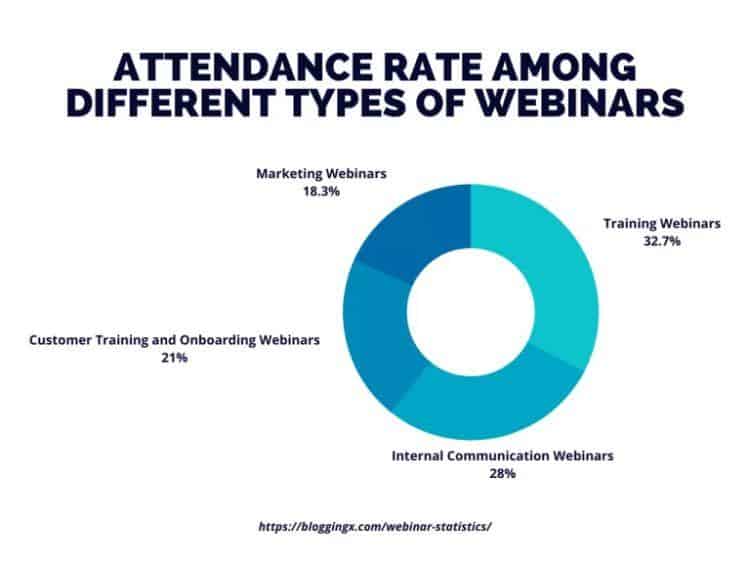
Image Credit: Confertel.net
Webinar schedules
13. The days of the week best to host webinars are Tuesday, Wednesday, and Thursday.
(Live Webinar)
Running a webinar on the best days for your target audience is essential for increased participation rates.
Having the right analytics in place and hosting events on days when your target audience has a higher turn-up rate is beneficial on many different levels.
The mid-week days of Tuesday, Wednesday, and Thursday are the best days to host webinars.
14. The best time to run a webinar is between 11 am and 2 pm.
(GoTo)
The time a webinar is run can also help with engagement and participation rates.
The best time to run a webinar is between 11 am and 2 pm, Monday through Friday.
If possible, ensure that you host your events between these times.
If that’s not doable, having a pre-recorded event ready on demand might also work.
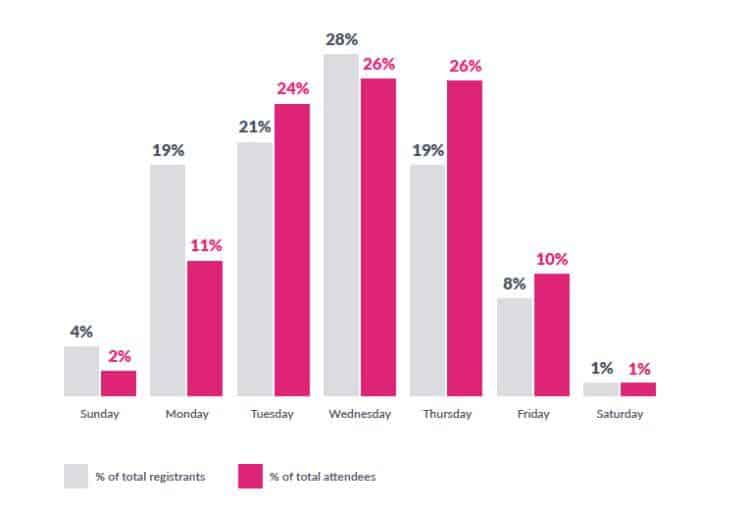
Image Credit: Goto.com
15. 44% of respondents said they prefer webinars to be around 45 minutes long.
(BigMarker)
The length of time a webinar is hosted can be essential to the event’s success.
While it’s common for people to sign up for webinars and seminars that they expect will run for an hour, a 45-minute viewing time seems to be the preferred length for many people.
BigMarker reports that around 44% of those who sign up for a webinar are more eager to participate in events around the 45-minute mark.
16. Conversely, 41% of those who attend webinars believe that 30 minute-webinars are ideal.
(BigMarker)
In addition to the previous stat, roughly the same number of people believe a 30-minute run time is perfect.
While there may be some discrepancies between these numbers depending on the topic, industry, and intensity, it’s essential to remember these figures when hosting an event.
Since engagement tends to decline after a specific time, it’s essential to keep timing in mind when hosting a webinar.
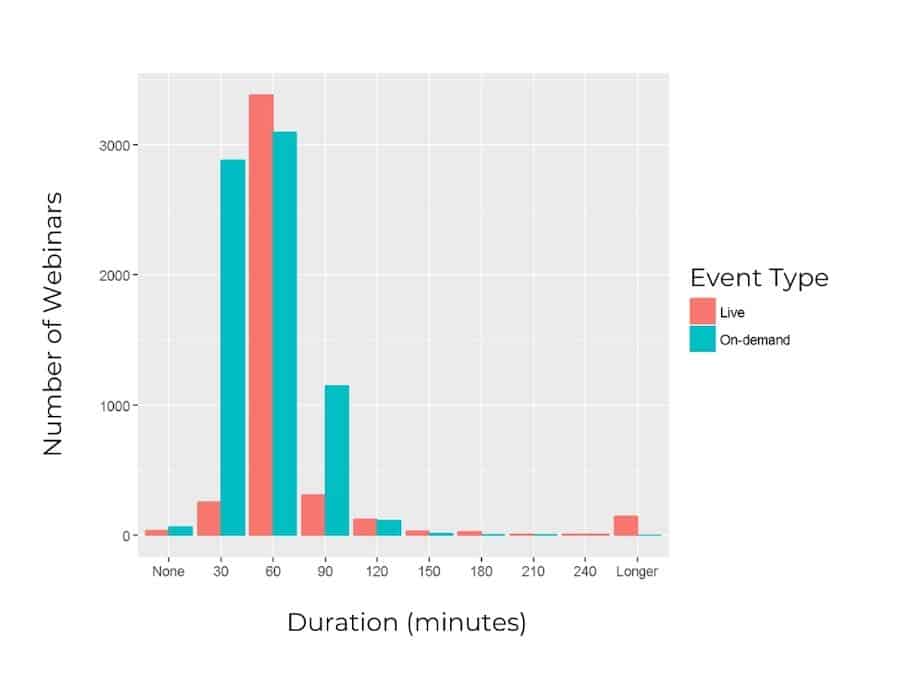
Image Credit: workcast.com
17. Having a Q&A session is beneficial to 92% of those who attend webinars.
(BigMarker)
If you host a webinar, plan on having a QA session at the end and ensure that people know about it.
Having a live event and Q&A session is something that can benefit those attending as well as those hosting an event.
Giving people a chance to ask, answer, and resolve objections can help with long-term customer retention.
In addition, it also provides hosts with an opportunity to clarify some of the crucial talking points further.
BigMarker reports that around 92% of people find a Q&A session beneficial.
18. As little as 15% of people attending a webinar register 15 days or more before the event occurs.
(WebinarCare)
Some people like to plan and get their schedules in order before attending an event.
While it might not seem like a lot, around 15% of people that sign up for a webinar, do so 15 days or more before the event.
This is important to consider when hosting a webinar, as having your marketing in place well ahead of time is equally important.
19. It was found that the optimal length of our webinar registration form is between five and six pages.
(WebinarCare)
Getting people to sign up for a webinar takes time.
It’s essential to ensure that your registration page message is on point, along with having such a page be of the right length.
Having too much information will put people off, while not providing enough can lead to getting registrants.
Surveys suggest that the optimal length of a webinar registration form is between five and six pages.
While this might sound like a lot, it’s essential to remember that more information usually means that the people on the webinar are more qualified and interested in what you have to say.
20. The pandemic helped to increase the popularity of webinars.
(Wyzowl)
Several different factors can be attributed to the increasing popularity of webinars.
This trend has been seen in recent years following the Coronavirus pandemic outbreak.
Webinars have become more popular, with more people staying indoors and connected via the internet.
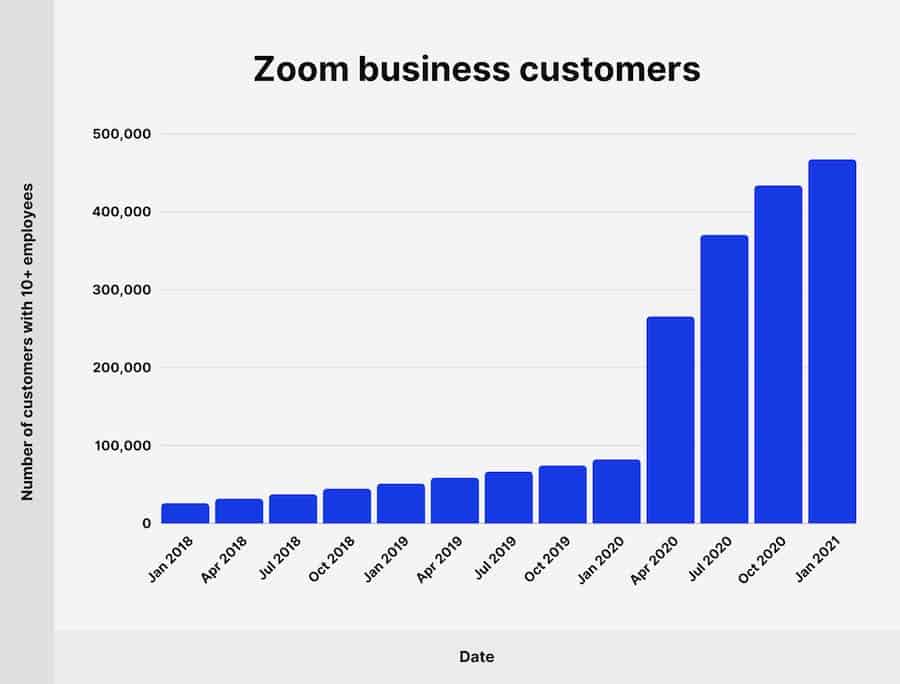
Image Credit: backlinko.com
Webinar costs
21. On average, webinars cost between $100 and $3000.
(WebinarBlast)
Running a webinar can be costly and usually depends on how complex or simple you want to make it.
While generally speaking, most people can host an event with minimal costs, the marketing effort into such an event can significantly impact the overall cost.
With an average cost of between $100 and $3000, it’s essential to remember your budget when planning your event.
Making a webinar successful
If you want to get the most out of your webinar and make it a success, there are various factors that you need to consider. Let’s have a look at some of these factors.
Choosing a webinar platform
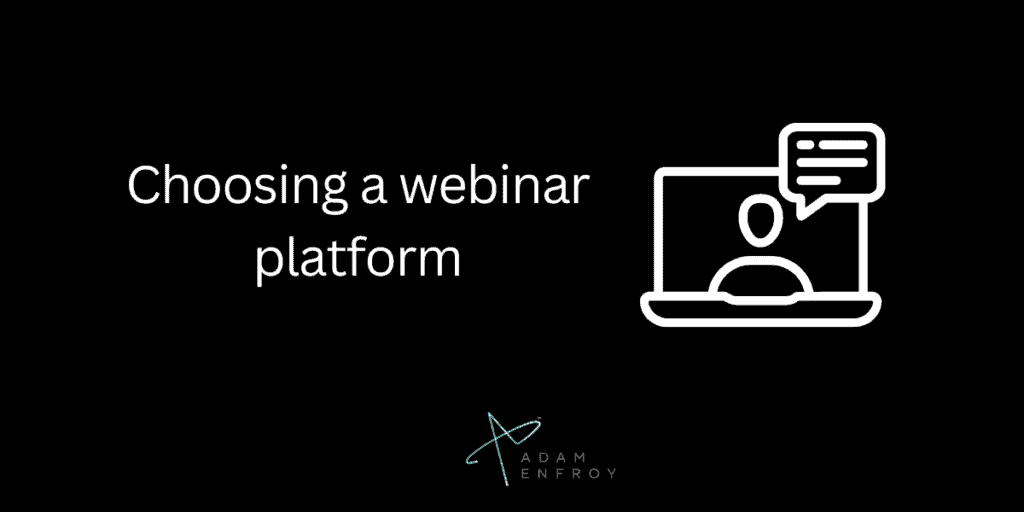
Before hosting a webinar, you must know which software or platform to use.
There are several options, but some of the most popular ones include Zoom, WebEx, GoToWebinar, and Adobe Connect.
Working with one of these should be relatively easy because each has specific features that make it better suited for certain types of webinars than others.
Marketing your webinar
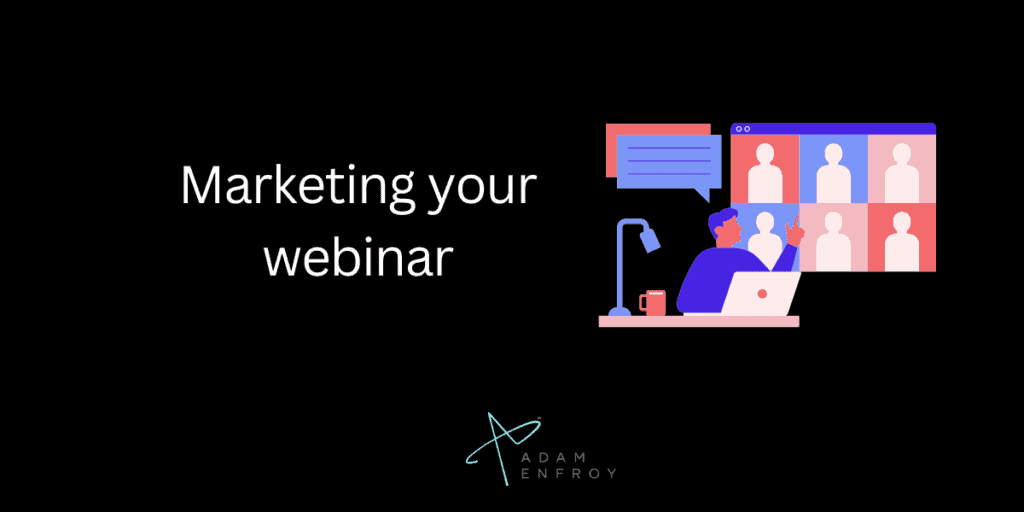
Marketing webinars are crucial for more registrants, participants, leads, and sales.
While this differs in every market and niche, there are various ways to get your message out. These include:
- Using social media tools to help spread the word on networks such as LinkedIn and Facebook.
- Posting ads on Facebook, Twitter, and Google with a short call-to-action to get people to your registration page.
- Using SEO tools to rank for specific keywords related to your webinar.
- Taking advantage of email marketing software to send webinar promotion emails to a list of subscribers.
You don’t have to use every marketing channel, but it’s essential to test the one you believe is best for you and find out what works and what doesn’t.
The good news is many of these channels are free but take some time to set up, while you can pay for speed on others.
Choosing a speaker
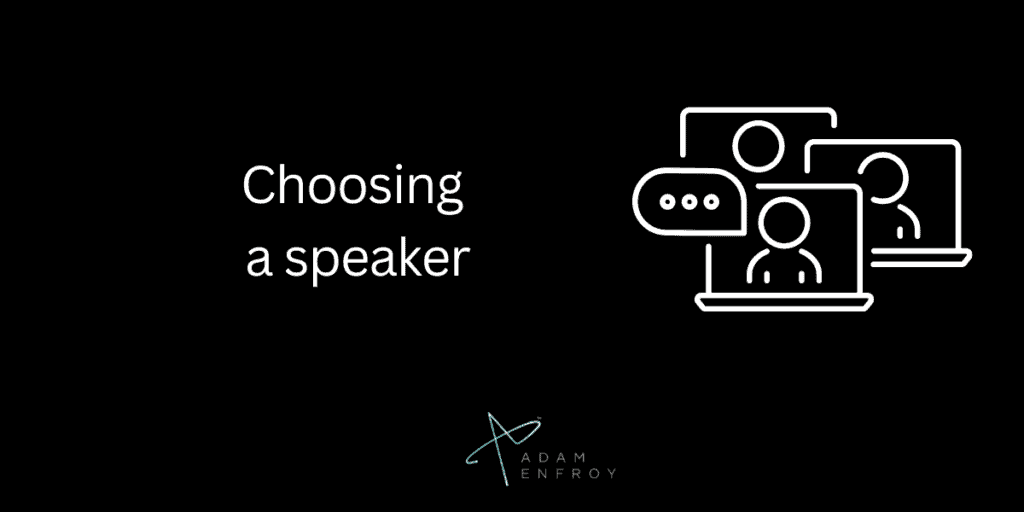
Hosting a webinar is not the same as giving an impromptu speech. It requires preparation, and you must be organized when presenting your message.
The host needs to be interactive in his presentation and answer questions from viewers.
This is particularly important if the webinar is about something complex or technical.
The best way to handle this is to train yourself to become a professional presenter who successfully hosts communication webinars and understands what’s involved when communicating with viewers.
Having the right webinar analytics
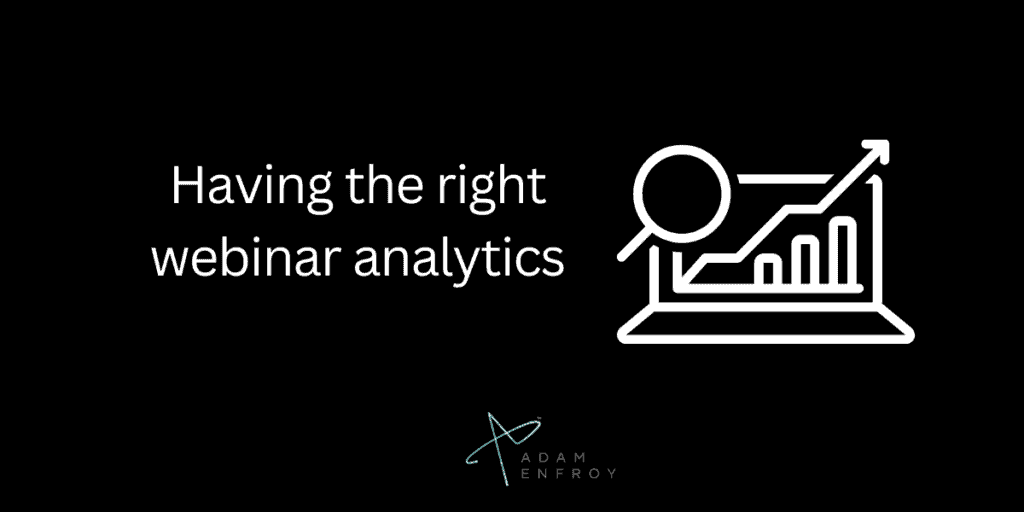
Webinar metrics and analytics play a significant role in determining how your webinar goes.
After a webinar, the information should have access to includes:
- The number of viewers that watched live.
- Replay views from those who missed the live version.
- The number of people who attended the webinar from specific countries.
- The number of qualified leads generated from your webinar.
- Questions asked and poll voting.
- And much more.
You should have a way to monitor these analytics after every webinar to see what went right and what went wrong.
In a nutshell, webinar engagement statistics show how involved viewers are before, during, and potentially after a webinar.
The best way to measure engagement is by looking at the average results from previous presentations.
This will help you determine if your message engages enough for people to ask questions and share their opinions.
Have a compelling registration page
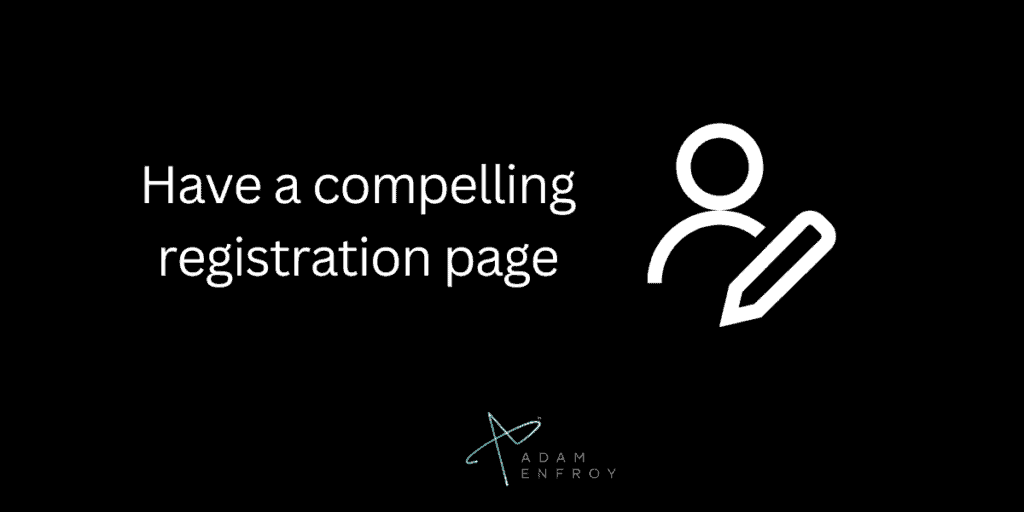
When attendees register for your webinar, they should see a compelling registration page that calls them to take action.
The form used for the registration process should include only relevant fields and be as simple as needed to fill out.
In other words, you can have a form several pages long as long as the information is required for your industry.
However, if this can be done in fewer pages, you should test it.
Webinar attendance statistics can also show how many people have completed the registration for a webinar compared to those who started filling in a registration form.
A successful webinar depends on the promotion and registration page, so getting this step right is essential.
Moreover, lead generation is essential for running webinars as it offsets the cost of webinars, making the registration page even more important.
Understanding who your target market is
Webinar attendees should be the target audience for your business.
For example, B2B marketers usually target other businesses, while B2C marketers might focus on individual consumers.
You need to understand your target audience to create a registration form that targets them specifically and then deliver the content they expect during the webinar.
Having webinars explicitly targeted toward your audience’s interest will help you achieve your goals much faster.
Live vs. pre-recorded
Live webinars are more engaging for attendees, but promoting them is more challenging.
Various webinar effectiveness statistics suggest that live webinars have higher conversions, but pre-recorded webinars have higher viewer retention.
In addition, having on-demand webinars can increase brand awareness and drive traffic to your website.
Both have pros and cons, so testing out what works best in your market is key.
Follow up with those that attended (and those that didn’t).
While the average attendance rate might vary depending on the niche, following up with those who attended your webinar is always good.
It would help if you also considered having a follow-up sequence that targets those who didn’t attend, as this can increase webinar attendance rates next time.
In addition, a webinar recording is an effective way to engage with viewers who missed the live presentation and offers a great reason to get in touch with this segment of your registrants.
You can also use these recordings to encourage viewers to register for webinars in the future by giving them the incentive to be live the next time.
Webinar duration
When people watch webinars, they usually look for information to help them solve problems.
The shorter your webinar is, the higher the chance of engagement since viewers can resolve their issues quickly during this time.
The webinar content should be concise and to the point so that viewers can learn something new while paying their utmost attention.
On the other hand, long webinars full of valuable content are great for lead generation and nurturing as they build a relationship with the audience over time.
As mentioned before, testing out variations of webinar length might be the way forward if you want to understand what works – and what doesn’t.
Post-Webinar Followup
The success of webinars relies heavily on post-webinar follow-up. Here are some of the most successful ways to go about it:
- Send out a survey to attendees – Ask attendees what they thought of the webinar, what topics they wish had been covered, and how the overall experience was.
- Offer additional resources – Provide access to materials related to the webinar topic, such as ebooks or webinars from other speakers.
- Invite people to join mailing lists – Invite people who attended your webinar to join your business’s email list for updates on new content, upcoming events, and more.
- Create an FAQ page – Answer common questions during the webinar and make them available on a dedicated page. This will help people find answers without having to contact you directly.
- Follow up with key contacts – If a person of influence was present at the webinar, follow up with them after it has ended and thank them for attending. This can help build relationships and increase brand awareness.
- Launch social media campaigns – Use social media channels to promote content related to the webinar and start conversations about what happened during it. Encourage people to share their experiences online.
These post-webinar follow-up tactics will help ensure that your audience gets the most out of their experience and that your business continues to grow positively.
With the right strategy, webinars can be a potent tool for companies looking to engage with their target audiences.
Wrap Up.
The above webinar marketing statistics should give you a better understanding of what it takes to create a practical webinar.
In addition, while one can use many webinar stats to determine the effectiveness of a presentation, you should go with what works best for your brand.
Finally, keep things simple and concise for maximum engagement while targeting the right people on social media.
How do you feel about the above statistics? What’s the best webinar you’ve ever attended? Feel free to share your experience in the comments below.
Further reading on AdamEnfroy.com: Choosing the right webinar platform is crucial.
Here are some posts to help you do this:
- Zoom vs. GoTo Meeting vs. Webex vs. WebinarJam: Here, I compare these four webinar platforms.


